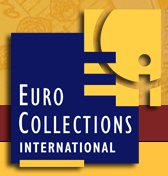
Germany 2011 10€ Franz Liszt Silver Proof
Franz Liszt (1811 - 1886) was a 19th century Hungarian composer, virtuoso pianist and teacher. Liszt became renowned throughout Europe during the 19th century for his great skill as a performer. He was said by his contemporaries to have been the most technically advanced pianist of his age and perhaps the greatest pianist of all time. He was also an important and influential composer, a notable piano teacher, a conductor who contributed significantly to the modern development of the art, and a benefactor to other composers and performers, notably Richard Wagner, Hector Berlioz, Camille Saint-Saëns, Edvard Grieg and Alexander Borodin.
As a composer, Liszt was one of the most prominent representatives of the "Neudeutsche Schule" ("New German School"). He left behind an extensive and diverse body of work, in which he influenced his forward-looking contemporaries and anticipated some 20th-century ideas and trends. Some of his most notable contributions were the invention of the symphonic poem, developing the concept of thematic transformation as part of his experiments in musical form and making radical departures in harmony.
In February 1847, Liszt played in Kiev. There he met the Princess Carolyne zu Sayn-Wittgenstein, who dominated most of the rest of his life. The following year, Liszt took up a long-standing invitation of Grand Duchess Maria Pavlovna of Russia to settle at Weimar, where he had been appointed Kapellmeister Extraordinaire in 1842, remaining there until 1861. During this period he acted as conductor at court concerts and on special occasions at the theatre. He gave lessons to a number of pianists, including the great virtuoso Hans von Bülow, who married Liszt's daughter Cosima in 1857 (years later, she would marry Richard Wagner). He also wrote articles championing Berlioz and Wagner. Finally, Liszt had ample time to compose and during the next 12 years revised or produced those orchestral and choral pieces upon which his reputation as a composer mainly rests. His efforts on behalf of Wagner, who was then an exile in Switzerland, culminated in the first performance of Lohengrin in 1850.
The reverse design features a stylised portrait of Franz Liszt with his signature below and the silhouette of a piano in the background. Around the top of the coin is the inscription for the commemoration, with the years of Liszt's life at the bottom.
The obverse carries the Eagle motif, State Emblem of the German Republic, fashioned in a style complimentary to the obverse design. Inscriptions for the denomination, country and year of issue, as well as the "G" mintmark signifying the coin being struck at the Karlsruhe Mint in Germany, are also found on this side.
Each silver coin is struck in .625 silver (as are all the 2011 German silver commemoratives due to the global increase in silver prices) and is available in both proof and Brilliant Uncirculated quality. As of writing this article Euro Collections International currently stocks the Proof version only.





No comments:
Post a Comment